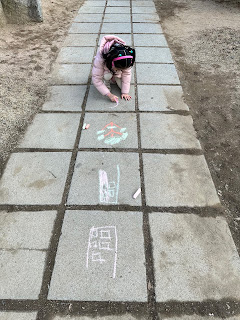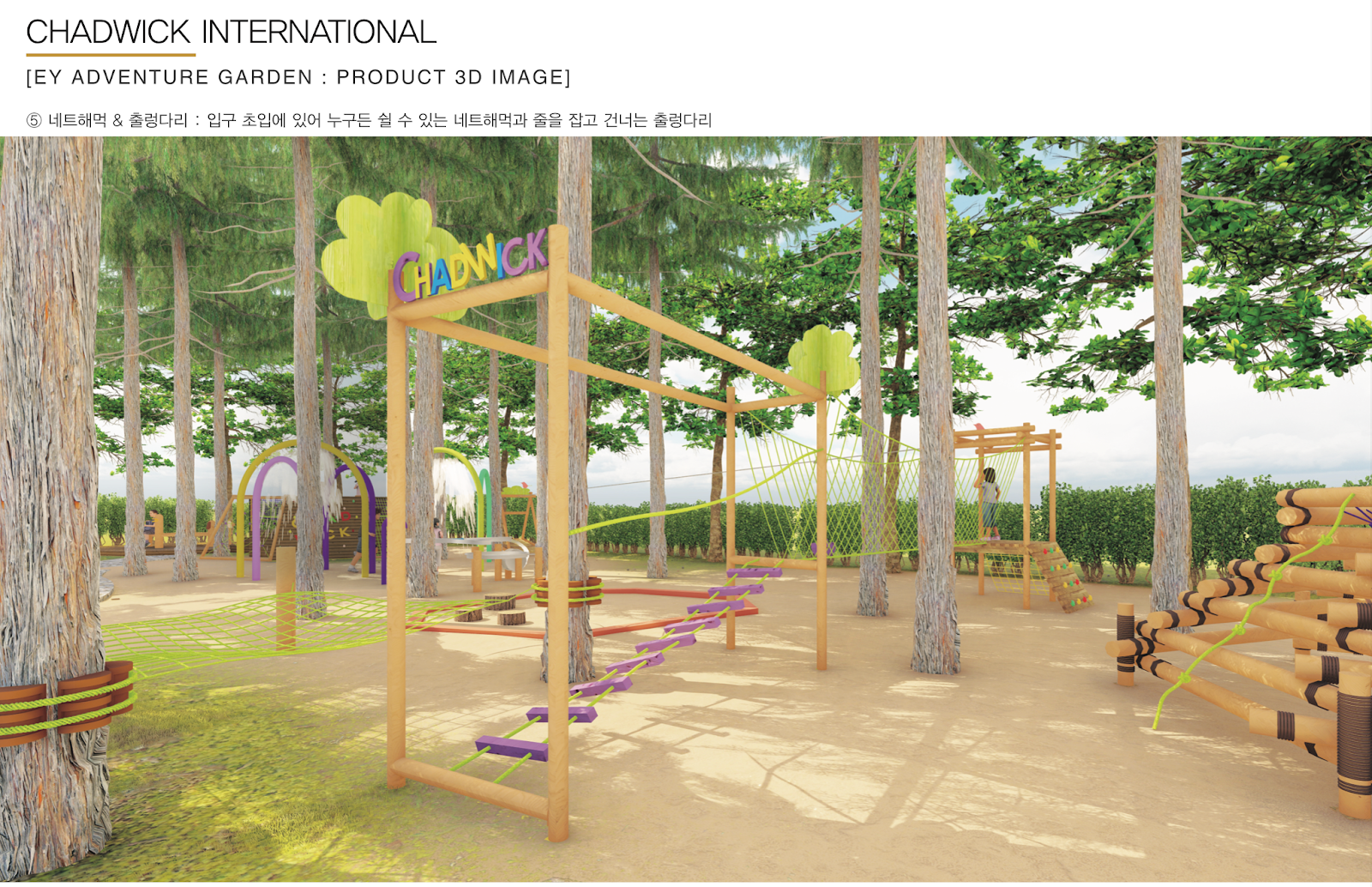This week, I took some of my students outside, and they were really excited, even though it was super cold, below -10 degrees!
To kick off our outdoor adventure, I instructed my students to find a spot and sketch anything they observed that was living or human-made. With materials like paper, pencils, and chalks from the classroom, they enthusiastically began drawing their surroundings. What surprised me was their focus on human-made structures in their sketch. Their sketches featured apartment buildings, our school campus, all defined by distinct lines and square shapes forming grids.
The sight of apartments and soccer nets immediately caught my attention, prompting me to join in the drawing. This experience resonated with the insights from this week's reading by Gerofsky & Ostertag (2018), highlighting how grids and building structures have served as powerful tools of territoriality and colonialism since the 15th century. The reading explained how grids compartmentalize spaces of thought into orderly, separate, and sealed boxes or cubicles (Gerofsky & Ostertag, 2018).
(My sketch of our school field)
Post-reading, I couldn't help but notice grids everywhere—floor patterns in photos, items on my classroom whiteboard, windows and doors of buildings, patterns on the school fence, and even the classroom itself, resembling a little grid box.
This experience triggered memories of a gardening activity I conducted last Spring with my former students at a school garden. I recalled attempting to control the garden by arranging it in rectangular or grid shapes, placing gardening paper in rows, and cutting it into rectangular shapes for seeds or planting.
Reflecting on this, I realized how we often find comfort in placing ourselves within rectangular shapes and grids, seeking a sense of control in our lives.
Returning to the outdoor activity, our students expressed disappointment at not finding any living things other than trees and humans. They explained that all the ants and other creatures (given the scarcity of bugs other than ants and spiders in our town) seemed to be in hibernation (why not?)
Prompted by this, I asked them to observe any patterns and lines they could identify. Their response emphasized rectangular and square shapes with straight lines. I posed another question:
"What if our buildings, soccer nets, and fences were not straight but irregular, and they didn't form rectangular shapes?"
They replied,
"That would be so weird, and maybe the buildings would collapse."
It was fascinating to hear their perspectives align with the insights from this week's reading—providing opportunities for students to explore different patterns, lines, and expressing the reasons behind them is crucial, especially in outdoor settings.
Here are some activities for experiencing lines and angles through whole-body movement or large body motions outdoors:
1. Utilize sidewalk chalk to draw various shapes and angles on the pavement. Encourage children to move along the lines or imitate the angles with their bodies. Incorporate games like hopscotch with geometric shapes or create a life-sized angle board where children match specific angles with their movements.
2. Engage in nature-inspired art using natural materials. Arrange sticks or stones to form geometric patterns or shapes, discussing the angles created by their placement.
3.Provide materials like sticks, stones, or branches for outdoor structure building. Discuss the angles formed by the arrangement of these materials, allowing children to visually understand how different angles contribute to the stability and design of their structures.
Reference
Gerofsky, S. & Ostertag, J. (2018). Dancing teachers into being with a garden, or how to swing or parkour the strict grid of schooling. Australian Journal of Environmental Education, 34/2, 172-188.




















Hi Sue! I love that you involved your students in the activity of the week rather than just undertaking it yourself! They naturally captured ideas that were present in the readings, such as the human use of geometric shapes. I’ve been completely reassessing how I teach Grade 1 geometry this year as we’ve been studying the use of the body and senses to develop a deeper understanding, and I really appreciate your suggestions about how to engage with lines and angles outdoors!
ReplyDeleteI especially like the idea of allowing students to design structures and seeing what angles and shapes naturally occur. Once they see that certain angles and designs are often necessary for structural stability, I’m sure it will spark discussions about how geometric elements are present in our lives. Our fifth unit, “Inspired by Nature”, challenges students to use biomimicry to design structures or machines that incorporate naturalistic functions or form. These ideas will converge perfectly there!
Hi Sue
ReplyDeleteI thoroughly enjoyed reading about your outdoor adventure with the students and the insightful connections you made to Gerofsky & Ostertag's (2018) reading on grids and territoriality. Indeed, your incorporation of real-life experiences, like the school garden and the recent outdoor activity, adds a personal touch that resonates with me.
Also, your engagement with the students, especially their disappointment at finding few living things during the outdoor activity, led to an exciting discussion on patterns and lines. To illustrate, your question about imagining irregular structures and the students' responses showed a connection to the reading, emphasizing the importance of providing opportunities for exploring different patterns and lines.
In addition, the suggested outdoor activities for experiencing lines and angles are fantastic ideas. Using sidewalk chalk for geometric shapes and angles, engaging in nature-inspired art, and providing materials for outdoor structure building are educational and promote creativity and physical activity. Therefore, I appreciate your practical examples, making it easier for readers to implement similar activities in different settings.
Your personal touch in the postscript, mentioning your previous work with an outdoor space company and reflecting on the learning and playful opportunities for students, adds depth to the narrative. It encourages readers to consider the potential for redesigning outdoor spaces to enhance learning experiences.